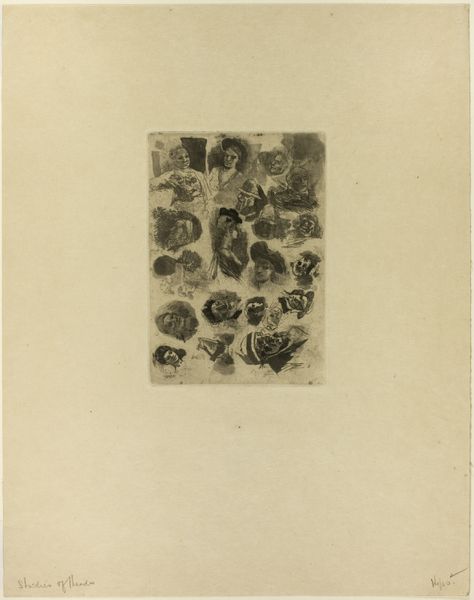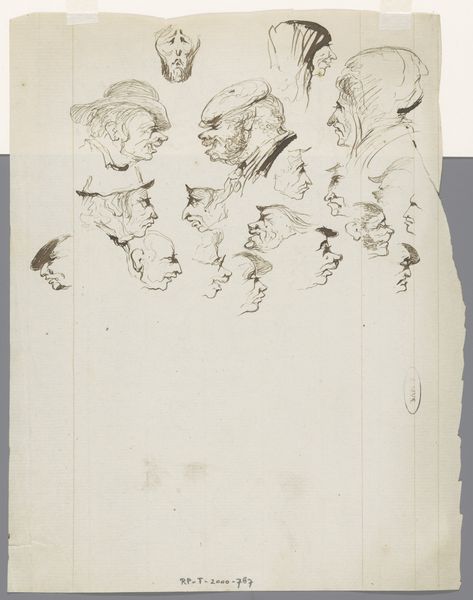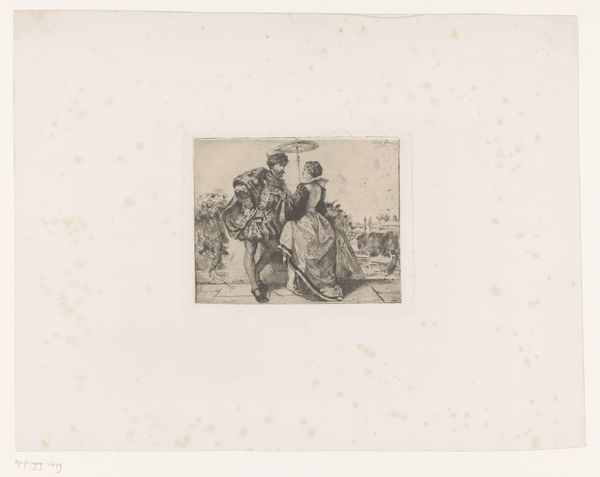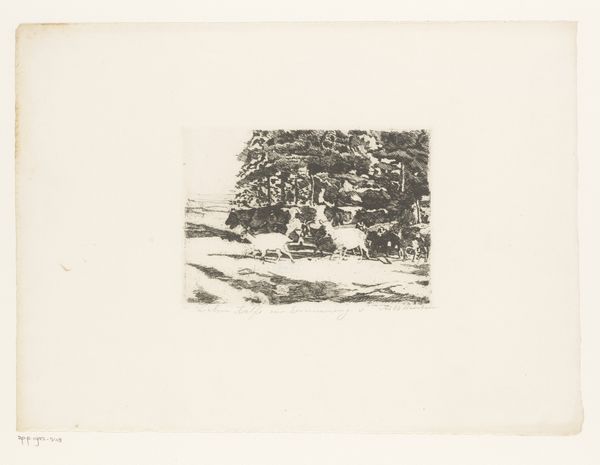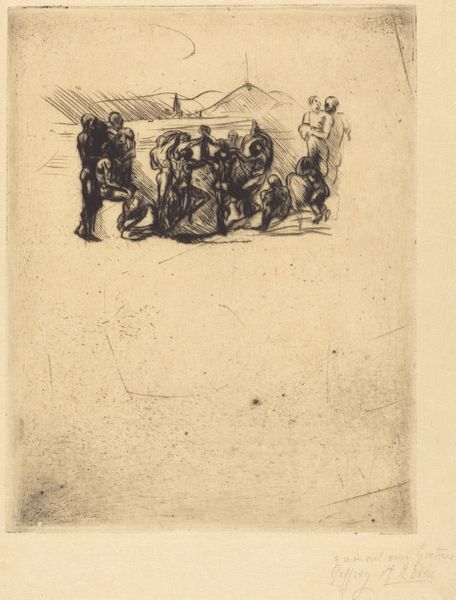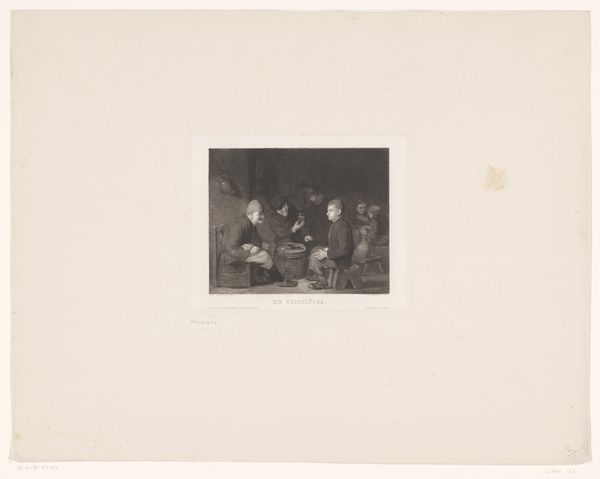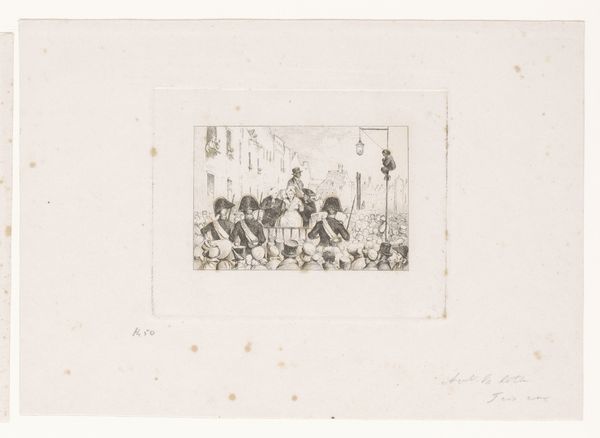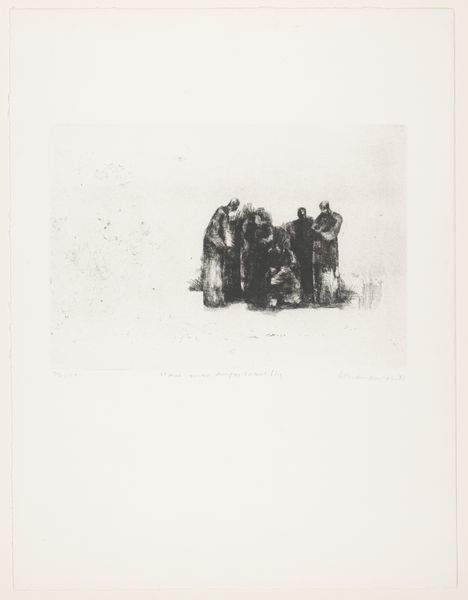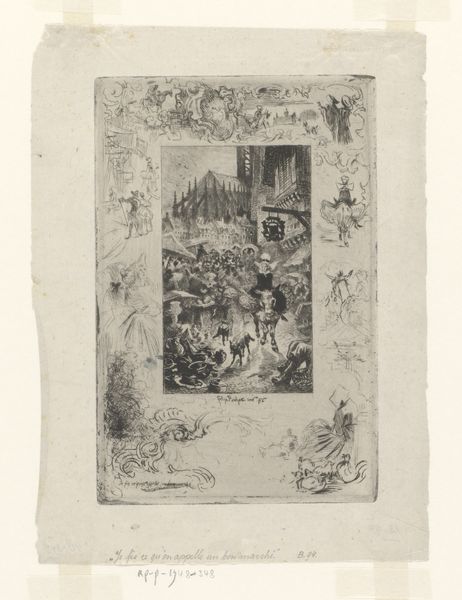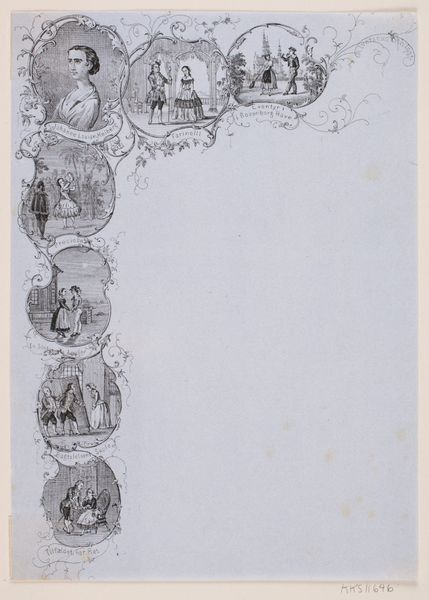
#
photo of handprinted image
#
light pencil work
#
shading to add clarity
#
pencil sketch
#
incomplete sketchy
#
ink drawing experimentation
#
pen-ink sketch
#
sketchbook drawing
#
watercolour illustration
#
watercolor
Dimensions: height 360 mm, width 245 mm
Copyright: Rijks Museum: Open Domain
Curator: At first glance, I sense a rather haunting effect, almost theatrical, arising from the unfinished sections amidst the density of the crowds portrayed here. It feels intentionally stark. Editor: This is a drawing by Jean-Baptiste Meunier, believed to date between 1831 and 1900. It's titled "Abdicatie van Karel V van Habsburg"—"The Abdication of Charles V of Habsburg." Curator: The clustered figures definitely evoke a sense of historical drama and weighty decision-making. Consider how faces seem to emerge from an obscured mass, creating a feeling of anxious onlookers pressing in. Are they representative of political factions or symbolic observers, do you think? Editor: Interesting. I find the medium incredibly expressive. The contrasts between light and shadow rendered with what looks like ink, possibly some watercolor too, adds a layer of complexity. This suggests preliminary explorations of light, depth and group dynamics through variations in textural weight and distribution. It seems focused more on compositional strategies rather than pure representation. Curator: Agreed. Yet, beyond the visual strategy, the choice of subject reveals something fascinating. The abdication of Charles V—a pivotal moment where power shifts—becomes a study in loss and legacy. I imagine this moment represented, not just of one man's choice, but a turning point felt throughout an empire and embodied collectively within its people. What of those voids that obscure swathes of the masses represented? Editor: Perhaps the absence speaks to absences in records, both historical and experiential? Or maybe those voids emphasize power, as opposed to being merely descriptive—suggesting its ability to disappear at will? Technically speaking, Meunier teases a completion of forms through nuanced line work which implies further layers might be added to a composition through subsequent layering if this stage weren't to have been deemed finished. Curator: It's certainly intriguing to consider. Seeing the emotional intensity captured so deftly makes this so impactful. I leave with an impression of transient human connections. Editor: Indeed—it gives insight into Meunier's evolving methodologies where incompleteness provides its own narrative possibilities that speak more clearly than absolute fidelity.
Comments
No comments
Be the first to comment and join the conversation on the ultimate creative platform.
